Key takeaways:
- Frontend development trends, such as responsive design and progressive web apps, demand continuous learning and adaptation to enhance user engagement and experience.
- Engaging with online communities fosters creativity and knowledge sharing, significantly enriching professional growth in the field.
- Experimentation with new technologies, like JavaScript frameworks and micro-frontends, leads to innovative solutions and enhances workflow efficiency.
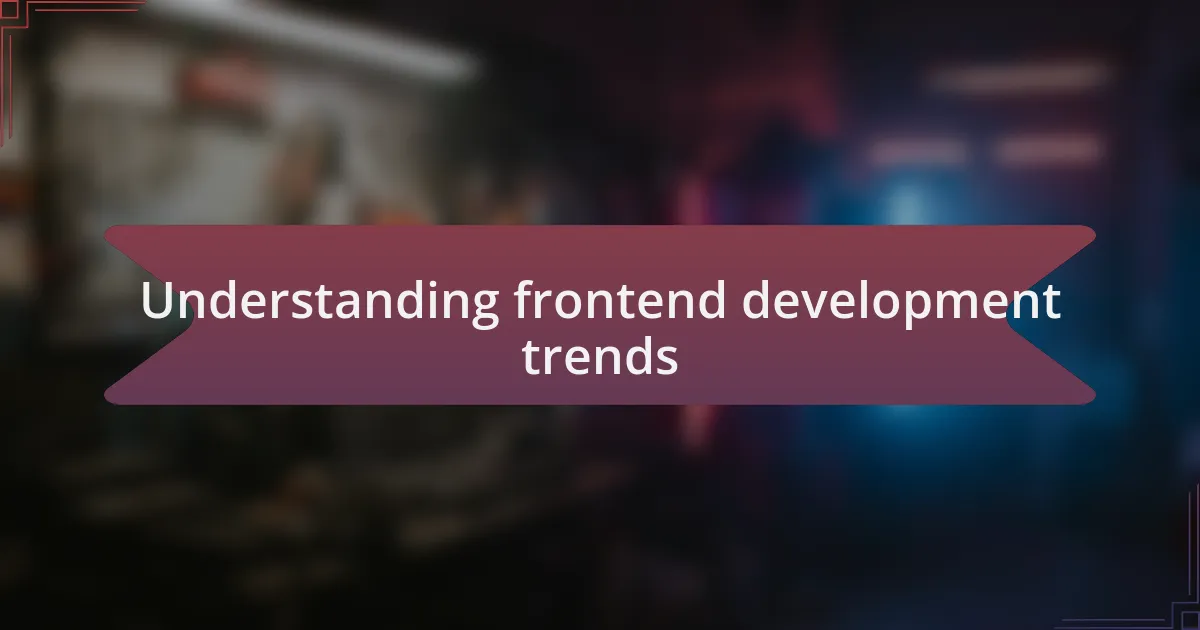
Understanding frontend development trends
Frontend development trends are constantly evolving, and understanding these shifts is crucial for staying relevant in the field. I remember when responsive design became a necessity; it shocked me how quickly websites shifted from fixed layouts to fluid designs. This flexibility not only catered to mobile devices but also provided an entirely new way to enhance user experience.
Have you ever observed how color schemes influence user engagement? When I revamped a project using vibrant, contemporary colors, I noticed immediate feedback from my stakeholders. Trends like using bold color palettes can create emotional connections with users, making them feel more invested in the product.
It’s not just about aesthetics, though; functionality plays a key role in current trends. I often find myself diving into the latest JavaScript frameworks, wondering which will truly stand the test of time. They offer innovative ways to streamline workflows, but I ask myself: which tools will genuinely enhance user interaction rather than just add another layer of complexity? This ongoing evaluation helps me choose wisely, ensuring I’m not just following trends but understanding their deeper implications on development.
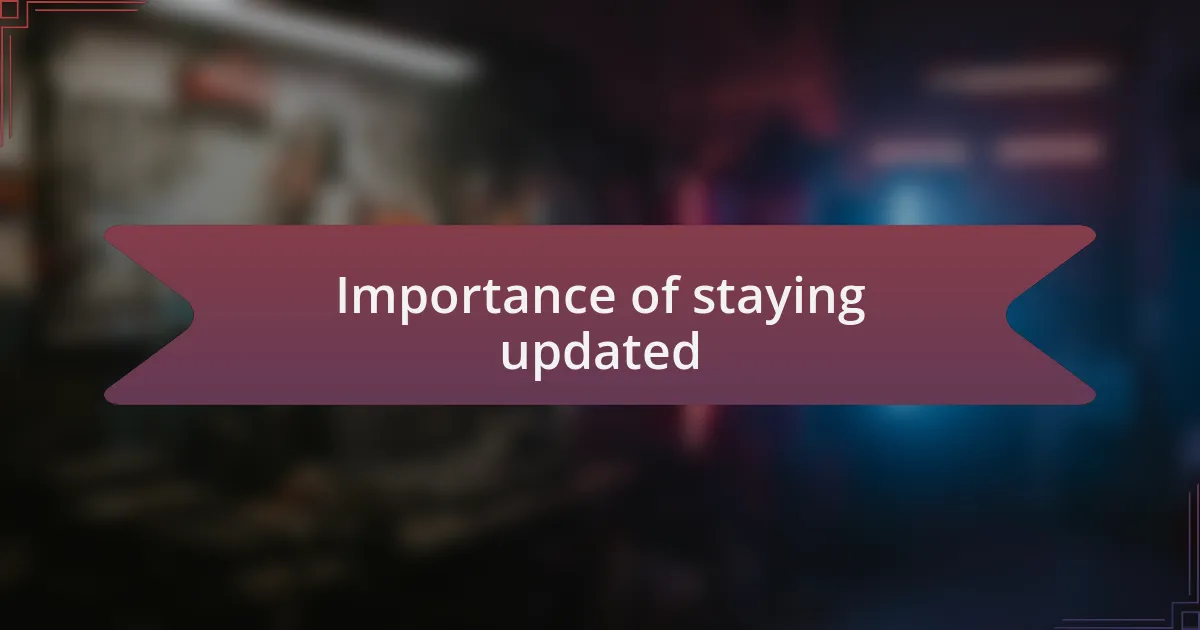
Importance of staying updated
Staying updated in frontend development isn’t just a trend; it’s a lifeline for anyone passionate about their craft. I recall attending a tech seminar where a speaker shared insights about the rise of progressive web apps (PWAs). The buzz in the room was palpable, as many of us realized that adapting to this shift could open new possibilities for our projects. If you’re not paying attention, how can you seize opportunities that could elevate your work to the next level?
In my experience, being well-versed in emerging trends fosters creativity and innovation. For instance, I often experiment with the latest CSS frameworks. I was once hesitant to adopt a new framework that claimed to simplify styling, but after giving it a shot, I found it drastically reduced my development time. Has there been a moment in your career where embracing a trend encouraged you to create something extraordinary?
Moreover, keeping up with frontend trends serves as a reminder that technology is a rapidly changing landscape. I vividly remember when the concept of serverless architecture gained traction; it transformed not just how I approached projects, but also how I envisioned scaling applications in the future. The question remains: if we resist change, what exciting advancements might we miss? Embracing the journey of continuous learning is essential for growth.
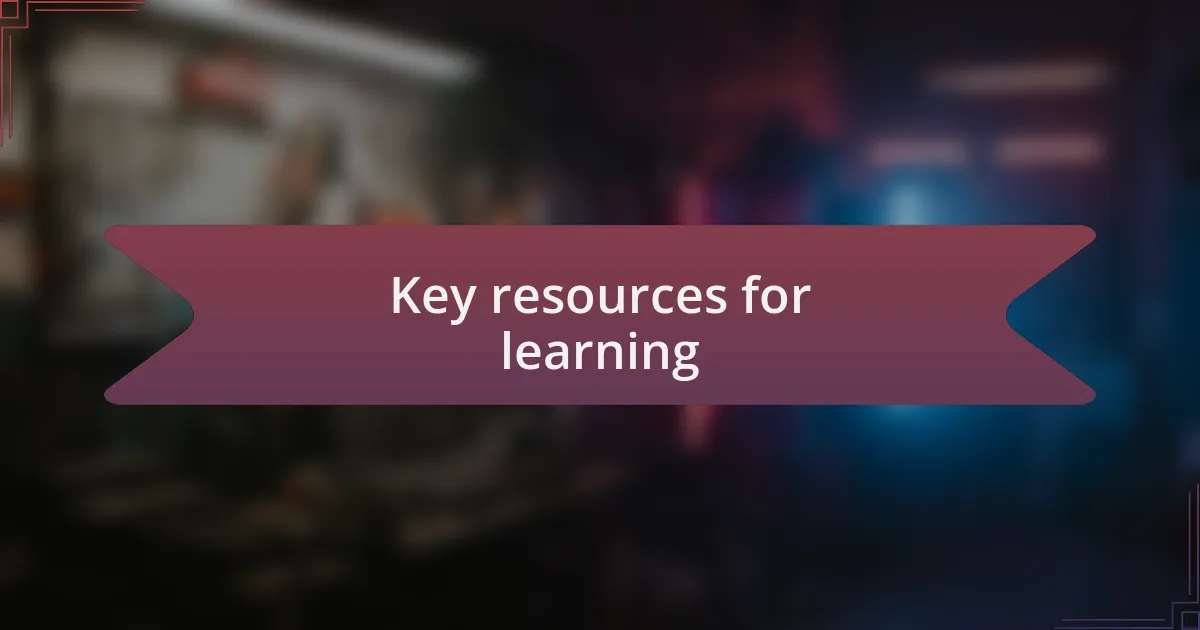
Key resources for learning
When it comes to learning about frontend development trends, I’ve found that engaging with online platforms can be incredibly effective. Resources like MDN Web Docs and freeCodeCamp not only provide in-depth tutorials but also foster a sense of community. I remember completing a challenging course on JavaScript, and the discussions in the comments section often sparked new ideas for projects I hadn’t considered. Have you taken advantage of online communities while learning?
Another invaluable resource has been tech-focused podcasts and YouTube channels. I often listen to shows like “ShopTalk Show” during my commutes. I recall one insightful episode that broke down the importance of accessibility in web design, pushing me to reevaluate how I build user interfaces. Listening to industry experts discuss current trends really helps me internalize information and feel connected to the broader community.
Books remain a cornerstone of my learning journey, too. I still treasure a well-worn copy of “Eloquent JavaScript” that I often revisit to deepen my understanding. There’s something about physically flipping through pages that taps into a different kind of focus for me. Have you ever had a book change your perspective on a topic? I certainly have, and it’s a reminder that there’s always a fresh angle to explore.
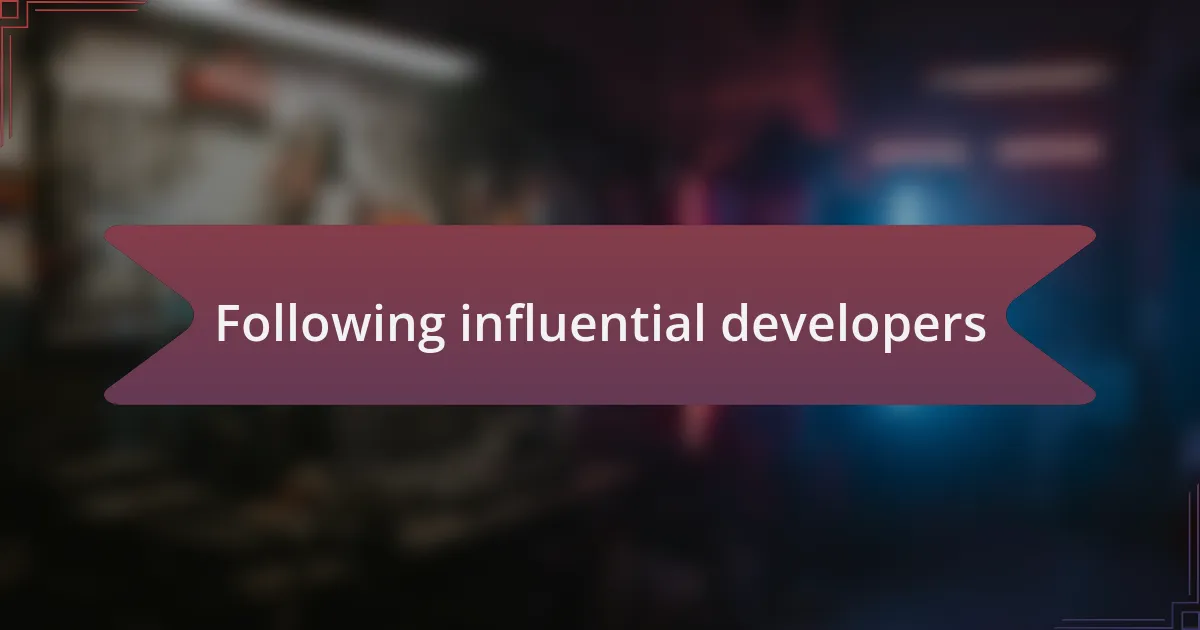
Following influential developers
One of my favorite ways to keep up with frontend trends is by following influential developers on social media platforms like Twitter and LinkedIn. I remember discovering a developer whose work on CSS frameworks was groundbreaking, and their daily tweets about emerging techniques instantly made me feel more connected to the evolution of the field. How often do you find yourself inspired by a single tweet? In my experience, these nuggets of information can lead to a whole new project or a fresh perspective.
I also make it a point to engage with the blogs and newsletters of key figures in frontend development. For instance, I once read a post from a developer I greatly admire about the future of React, and it prompted me to dive deeper into the framework’s latest features. This experience reiterates the importance of not just passive consumption but actively reflecting on what industry leaders share. Do you take time to process what you read, or do you rush to the next piece of content?
Moreover, attending webinars and live coding sessions hosted by these influential figures can be incredibly enriching. I vividly recall participating in a live stream where a developer showcased cutting-edge tools for performance optimization, and it genuinely transformed how I approached my own projects. There’s a unique thrill in learning directly from those at the forefront of the industry — it makes the trends feel tangible and immediately applicable. Have you ever experienced that rush of excitement when learning something new from a live session?
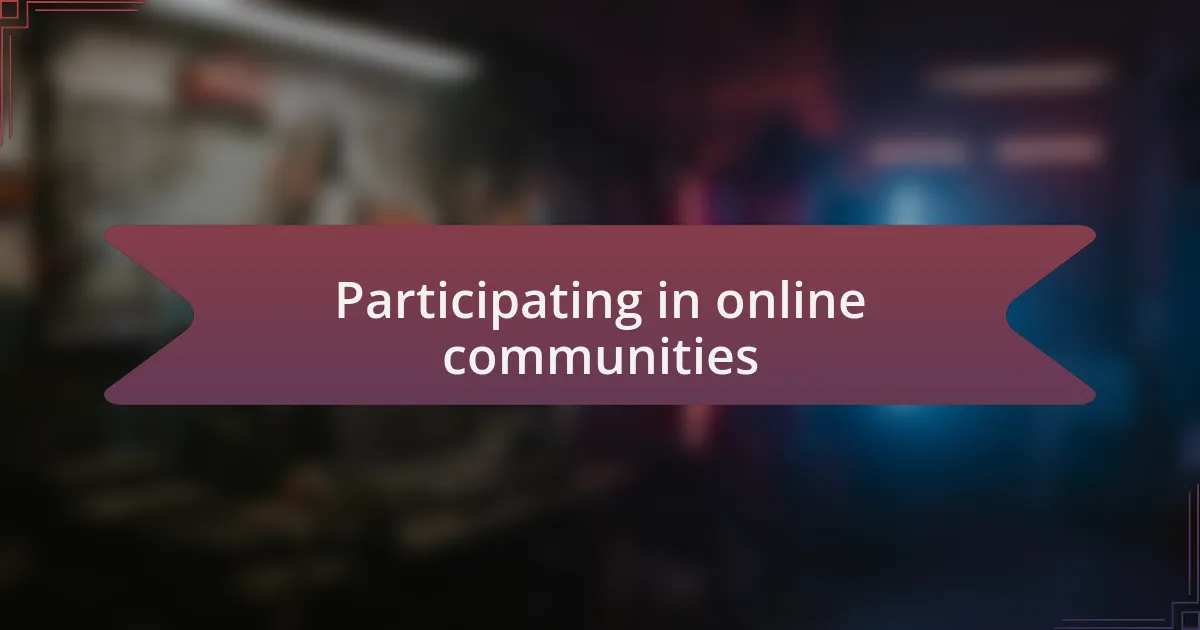
Participating in online communities
Participating in online communities has been a game-changer for my understanding of frontend trends. I recall joining a Discord server dedicated to web development where members share everything from coding tips to project showcases. The sense of belonging and instant feedback I received on my own work was invaluable. Have you ever found a place where your ideas are not just acknowledged but celebrated?
I also engage in discussions on platforms like Reddit and Stack Overflow. There was a time when I posted a question about a complex CSS issue I was facing. The responses I received came from developers across the globe, each offering their unique perspective and solutions. This not only solved my immediate problem but also taught me new techniques I had never considered. Isn’t it fascinating how a single question can lead to a treasure trove of knowledge?
Moreover, I often participate in virtual meetups hosted by various coding groups. I remember one session where we brainstormed new design approaches together, and the energy was infectious. Collaborating with others, whether through brainstorming or sharing code, reinforces my knowledge and keeps me on the pulse of emerging trends. How do you think collaboration shapes your perspective on the ever-changing world of frontend development?
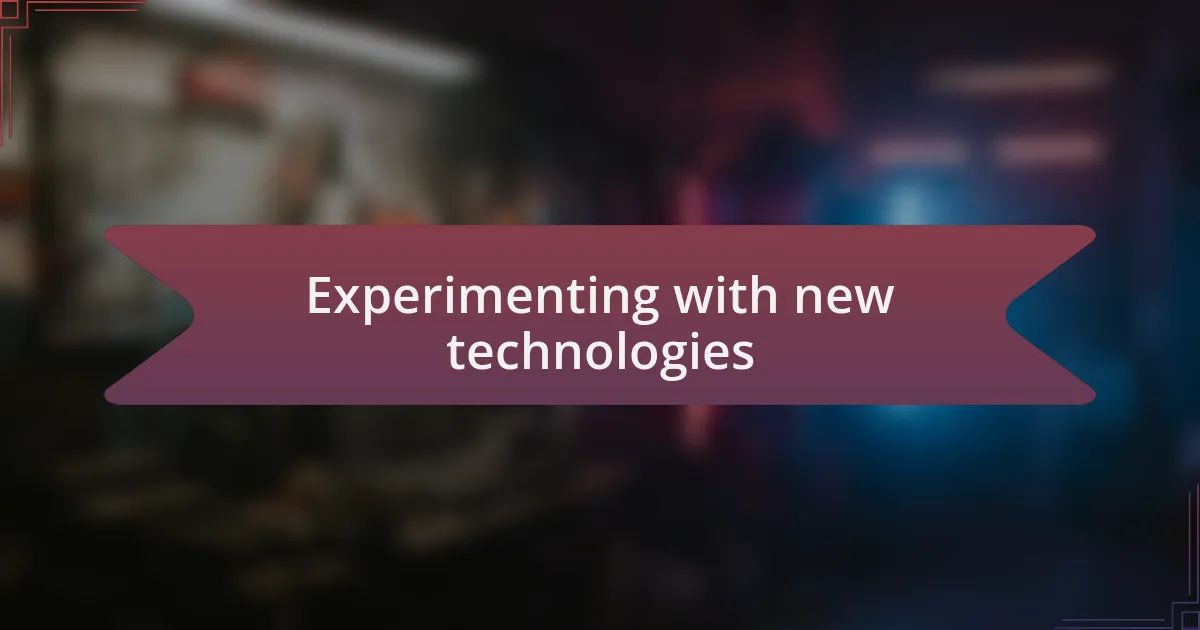
Experimenting with new technologies
Experimenting with new technologies has always been an exciting part of my journey as a frontend developer. I vividly remember the first time I tried out a new JavaScript framework, and it felt like diving into unexplored waters. I was both apprehensive and thrilled, but nothing beats that moment when I realized the potential it had to streamline my workflow. Have you ever taken a leap like that?
One memorable experience for me was when I decided to build a small project using WebAssembly. At first, it seemed daunting – the documentation was dense and the concepts were new. However, being able to run code in the browser at near-native speed was incredibly rewarding. I learned that pushing myself to experiment with new tools not only enhances my technical skills but also sparks creativity in how I approach problems. Don’t you think that stepping out of our comfort zones opens up new possibilities?
Recently, I explored the realm of micro-frontends, and it was a profound realization about how I think about app architecture. As I played with breaking down monoliths into smaller, manageable pieces, I began to see familiar projects in a new light. This experimentation helped me think critically about scalability and maintainability. Isn’t it amazing how a fresh perspective on technology can revolutionize the way we build?
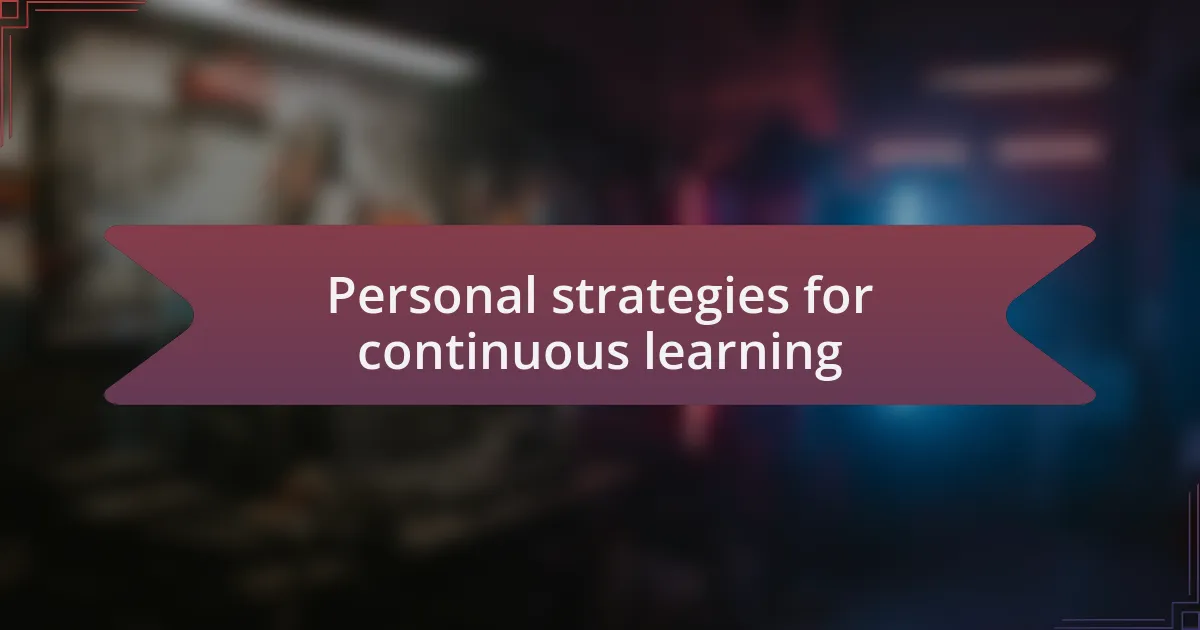
Personal strategies for continuous learning
Continuous learning is essential in the fast-paced world of frontend development. One of my favorite strategies is setting aside dedicated time each week to follow online courses or webinars. I vividly recall a session on CSS Grid that opened my eyes to new layout possibilities. That “aha” moment made me realize how structured learning can push my boundaries and expand my capabilities.
Additionally, I find immense value in engaging with the community. Participating in meetups or online forums has been a game-changer for me. For instance, I once chatted with a fellow developer who shared their experience with progressive web apps, igniting my passion to dive deeper into that area. The conversations I have often lead to surprising insights that reshape my understanding of current trends. How often do we overlook the value of peer insights?
Finally, I believe in the power of reflection. After completing a project, I take time to analyze what worked well and what didn’t. I remember one complex site I built where I struggled with performance issues. Reflecting on that experience taught me critical lessons about optimizing assets and lazy loading. Recognizing these lessons helps me approach future projects with a clearer mindset. Have you taken time to reflect on your past work?